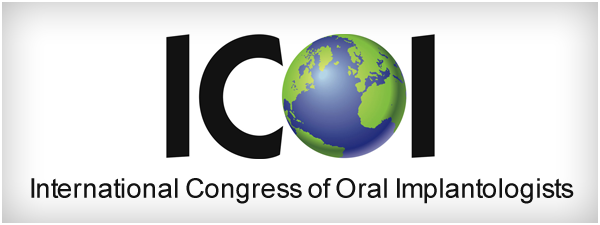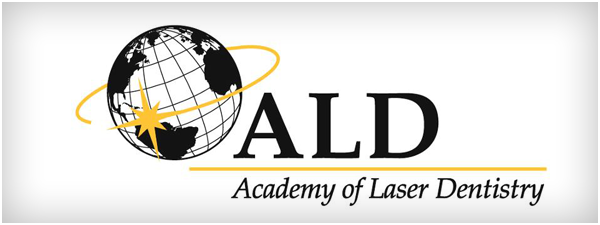FAQs
COSMETIC CARE
My old fillings in the front have turned dark, can they be bleached?
Unfortunately, dental bondings, composite resin fillings (tooth colored fillings) and old crowns cannot be bleached. Fillings that have discolored indicate that they are either leaking or have secondary decay, so it is best to replace them. A better choice may be to replace them with porcelain laminate/veneers for longer lasting results. Remember; only replace these fillings after bleaching in order to match the new improved color of your teeth. How long does bleaching or laser teeth whitening really last? It depends on many factors including your diet, the original color of your teeth, and your personal habits like smoking, drinking red wine, etc. Also darker teeth will need more than one whitening session to achieve the desired result. What's most important is what you do for maintenance. Professional office visits are not enough. You must incorporate an effective maintenance regimen at home such as using whitening toothpaste which is specifically designed to non-abrasively remove surf ace stains like coffee, tea, tobacco and red wine, as well as remove plaque and bacteria. Also use the touch up kit given by your dentist to keep bleached teeth at their whitest.
I have one dark tooth in the front. Will regular at-home bleaching makes it lighter?
First of all, the cause of the dark tooth must be determined. It could be due to an earlier trauma to the tooth or previous root canal treatment. In such a case external teeth whitening treatments may not help. Your dentist may try internal bleaching which may take several sessions. If not, consider dental bonding, porcelain veneers, or capping the tooth to mask the darkness.
Will my teeth be sensitive following Bleaching?
Teeth may be sensitive during the week following the in–office bleaching. This can be dramatically reduced by using Sensodyne toothpaste to brush your teeth the week prior to and the week following the bleaching process. Also, your dentist may recommend fluoride treatment following the bleaching process.
What is the difference between dental bonding and porcelain veneers?
Dental bonding is a plastic tooth colored (composite) resin material that is molded onto your teeth and hardened with a blue light. It is usually done in one visit. Little tooth reduction and usually no anesthesia is required. The disadvantages of dental bonding are:
- They stain over time, may chip and may need to be replaced more often.
- Porcelain veneers are thin layers of stacked porcelain that are fabricated in the lab and bonded to teeth.
- It usually takes 2 visits. Little tooth reduction and some anesthesia are required.
- Porcelain veneers are stronger than dental bondings and less prone to staining.
I have a space between my two front teeth. How can it be closed?
There are several ways to correct it. Your Dentist may advice Dental Bondings, Veneers or Orthodontics. Again, seek the advice of your dental health professional to choose the procedure that's best for you.
If I require fillings, what type should I get?
In the past, Silver or amalgam fillings were extensively used. They are not tooth colored, stain teeth over time and healthier tooth structure may have to be removed to retain them since they do not bond to your teeth. Also, since they are a alloy of silver with mercury, there is a risk of mercury poisoning. Now, depending on the extent of decay and amount of tooth structure that is lost, your dentist may advice composite (tooth colored fillings) or porcelain inlays or onlays. Since tooth colored fillings bond to your teeth, there is no need for removal of healthy tooth structure.
I have a gummy smile... can anything be done?
With the advent of laser dentistry, this can be done very easily and painlessly in most cases. Tissue sculpting (gingivectomy) is done in adjunct to any required cosmetic work to achieve beautiful, healthy smile.
RESTORATIVE CARE
What is tooth decay (caries or cavities)?
Tooth decay is the disease known as caries or cavities a highly Preventable disease caused by many factors.
Who is at risk for tooth decay?
The answer is... everyone who has a mouth. We all host bacteria in our mouths which make everyone a potential target for cavities. Risk factors that put a person at a higher risk for tooth decay include:
- Persons with diets high in sweets, carbohydrates, and sugars
- Persons who live in communities with limited or no fluoridated water supplies
- Children and senior citizens
Why should I spend a lot of money on a root canal? Why not just pull the tooth?
Losing a tooth can be the beginning of many more lost teeth. Saving the Tooth maintains space, keeps other teeth from shifting, and eliminates the need and cost of a bridge or implant. Although seemingly expensive, it is actually quite cost effective.
What are dental implants?
Dental Implants are made of titanium and placed directly into your jawbone surgically. Once they integrate with your bone, a crown, bridge or denture is placed over the implants.
GUM CARE (PERIODONTALCARE)
What is 'plaque' and how does it affect my teeth?
Plaque is a colorless, sticky film of bacteria that constantly forms on teeth. If left undisturbed, it hardens to form tartar. The bacteria in the plaque produce byproducts that can not only irritate the gums and make them bleed, but it can also lead to periodontal disease. A daily regimen of proper brushing, flossing and rinsing (plus, regular dental visits), will help you keep your teeth healthy.
My gums bleed when I brush or floss. Is this normal?
Healthy tissue doesn't bleed. This is most likely a sign of early gingivitis. If you experience bleeding gums, see your dental health professional to review proper brushing and flossing techniques. Schedule a soft tissue evaluation with your dentist that will include x-rays and prophylaxis cleaning. Gum bleeding must be taken seriously because if left untreated, it will lead to periodontal disease.
How often should I have my teeth cleaned?
People accumulate plaque at different rates. Although most insurance plan coverage is for a twice a year schedule, it's sensible to get your teeth professionally cleaned as often as your dental health professional advises you, even if it's every 3 months.
How many times should I floss my teeth?
At least once a day. There's an old adage among dentists:Floss only the teeth you want to keep. If you don't want to lose your teeth, floss every day. Otherwise, you'll be 75% more susceptible to periodontal disease that has been documented to have serious health consequences, e.g. a higher likelihood of heart disease, diabetes, pneumonia and infections. About 45% of American adults have some form of gingivitis, and most adults over 60 have already lost their teeth. Don't be one of them. Floss at least once a day.
How Bad Breath Occurs ?
Bad breath occurs when sulfur compounds are produced in the body and released into the air. The most common source of this sulfur is anaerobic (without oxygen) bacteria that live in the grooves or fibers at the back of the tongue. These bacteria produce the sulfur that gives off an unpleasant smell. This frequently occurs when the mouth is dry, creating an ideal environment for anaerobic bacteria to thrive. Sulfur compounds are also produced when certain types of food are consumed. The compounds make their way into the bloodstream and then to the lungs, where they are excreted into the air we exhale.
Causes of Bad Breath
Bad breath is caused by many factors. Normally, saliva helps wash away the natural buildup of bacteria in the mouth and on the tongue. Yet, when saliva sits on the back of the tongue and is digested by bacteria, it shows up as a white film on the tongue. This is a major source of bad breath. Bad breath is also caused by postnasal drip, a condition where the back of the tongue and throat accumulate high amounts of protein, which bacteria thrive on. Foods that are high in protein or acidity, such as fish, milk, cheese or coffee, also cause bad breath. Dieting or fasting, both of which involve a low intake of calories, causes bad breath by reducing the saliva in the mouth. Contrary to popular belief, stomach problems do not cause bad breath.
More Serious Causes
More persistent problems with unpleasant breath can indicate diseases such as diabetes, liver dysfunction, pulmonary disease, and respiratory disease. Periodontal pockets, the spaces that form between the teeth and gums, are another source of bad breath. These pockets, which occur in the latter stage of periodontal disease, create spaces for bacteria to grow, and give off a chronic unpleasant odor. Dental work may be required in order to remove these pockets of bacteria. Periodontal disease is detected by the presence of bleeding gums, loose teeth, receding gums, or pain when chewing.
For more information on this condition, please refer to the Periodontal Disease section of our Patient Education Library.
Prevention
Proper oral hygiene eliminates many cases of bad breath. Daily brushing and flossing removes the plaque and bacteria that often cause bad breath. While brushing, take special care to thoroughly brush the back of the tongue where bacteria normally collect. Mints and mouthwashes can hide bad breath, but do not eliminate this condition. Avoid foods that have powerful odors and drink lots of water to insure that the mouth is cleansed and full of oxygen (an environment in which bacteria do not thrive). For information on current treatments, contact a dentist in your area regarding current products on the market that can eliminate bad breath
ORTHODONTICS/BRACES
What is orthodontics?
Orthodontics is the dental specialty that focuses on the development, prevention, and correction of irregularities of the teeth, bite, and jaws. A patient may consult an orthodontist after receiving a referral from his/her general dentist -- recommending orthodontic treatment to improve the patient's physical "orofacial" appearance. However, the American Dental Association recommends that every child receive an orthodontic evaluation by the age of seven.
Why choose orthodontic treatment?
Any orthodontic problem may be classified as a malocclusion, or "bad bite." The following problems may be helped or minimized with proper orthodontic treatment: misaligned, crooked, or crowed teeth, missing teeth, extra teeth, an overbite, an openbite and misaligned or incorrect jaw position.
At what age do braces become appropriate?
Moving and correcting the alignment of the teeth follows the same biological and physical process no matter what the age. However, an adult mouth must overcome already-positioned facial bones and jaw structure. Thus, overcoming most types of malocclusions may require more than one type of orthodontic treatment for adults. In most cases, the ideal age for braces, and other orthodontic treatments, are between 10 and 14 years of age; although, persons of any age can benefit from treatment.
What are the different types of braces available?
Braces, also called fixed orthodontic appliances, generally come in three varieties:
- Brackets, metal or plastic, clear or tooth-colored, that is bonded to teeth.
- Lingual-type brackets that attach to the back of teeth, hidden from view.
- Bands that cover most of the teeth with metal bands that wrap around the teeth.
What is Invisalign?
Invisalign is proven technology designed to give you the smile you've always wanted, without the pain and anxiety associated with metal braces. Invisalign uses a series of clear, removable aligners to gradually move your teeth. You wear a set of aligners for about two weeks, removing them only to eat, drink, brush and floss. As you replace each set of aligners with the next in the series, your teeth will gradually move until they reach the position your doctor has prescribed for you. The average treatment time is about a year. Contact your Orthodontist to find out if Invisalign is an option for you.
Oral health care and braces:
The following recommendations will help to eliminate, or reduce, any oral health problems while your teeth are in braces: Brush your teeth carefully after every meal with fluoride toothpaste and a soft-bristled toothbrush, as food becomes easily lodged in the braces. Floss daily between the teeth and the braces. Maintain every 6 month cleanings by an oral health professional. Limit your sugar and starch intake, as debris left behind from these types of foods may turn into damaging acids, which, in addition to promoting plaque formation, may also be harmful to teeth and gums. Avoid hard and/or sticky snacks that may be difficult to remove from the orthodontic equipment in your mouth. This includes foods such as popcorn, hard or chew candy, caramel, and/or nuts.
ORAL SURGERY
What are wisdom teeth?
Also called third molars, wisdom teeth usually make their first appearance in young adults between the ages of 15 to 25. Because most mouths are too small for these four additional molars, an extraction procedure, sometimes immediately after they surface, is often necessary.
When should wisdom teeth be removed?
The following symptoms may indicate that the wisdom teeth have erupted and surfaced, and should be removed before they become impacted meaning, the teeth have surfaced and have no room in the mouth to grow. However, each individual may experience symptoms differently.
Symptoms may include:
pain infection in the mouth, facial swelling, swelling of the gum line in the back of the mouth. Most oral health specialists will recommend an immediate removal of the wisdom teeth, as early removal will help to eliminate problems, such as an impacted tooth that destroys the second molar.
What problems are often associated with impacted third molars?
- Bacteria and plaque build-up
- Cysts development (a fluid-filled sac)
- Tumor development
- Infection
- Jaw and gum disease
What is involved in the extraction procedure?
Wisdom tooth extraction surgery involves removing the gum tissue that presides over the tooth, gently detaching the connective tissue between the tooth and the bone, removing the tooth, and suturing the opening in the gum line.
What is a Dry Socket?
Dry Socket is the most common complication of extraction. (removing a tooth) Most commonly associated with wisdom teeth extractions & lower molar extraction. Dry Socket is one in which the patient is having pain due to the loss of the blood clot from the socket following extraction, thus exposing the bone to air, food, and fluids. Patient experiences excruciating pain along with an offensive odor. This often occurs two or more days after an extraction and can last about 5-6 days.
This condition occurs most commonly
- In individuals who smoke before their recommended time. Smoking: decreases healing, decrease blood supply to the protective blood clot, brings toxic products to the area, injuries the gum tissue and the negative pressure of sucking removes the blood clot from the surgery site.
- If you do not care for your extraction site as instructed by staff.
- Not following your home care instructions.
- Sucking action from smoking, sneezing, coughing, spitting or sucking, within the first 24 hours.
- Women taking oral contraceptives are more susceptible.
DENTAL EMERGENCIES
How to handle a Dental Emergency?
According to the American Dental Association, the difference between saving and losing a knocked out tooth, is the thirty minutes following the incident. To save the tooth, follow these steps:
- Rinse the tooth in tap water.
- Avoid scrubbing the tooth.
- Insert the tooth into the empty socket quickly.
- If you are uncomfortable inserting the tooth, put the tooth in milk or water Get to the dentist immediately.
Common Dental Emergencies
Broken tooth/Fractured tooth
Although teeth are the strongest substance in the whole body, they may chip or break due to various reasons. Some of the most common reasons are biting into something hard accidentally, tooth with a large filling, root canal treated tooth that is not capped and tooth undermined due to decay.
What to expectDepending on the extent of fracture your tooth may be sensitive to temperature and pressure changes. Rinse your mouth gently with lukewarm water. Take a pain reliever if needed. See your dentist as soon as possible so he can determine the course of treatment.
How is it treated?Fractures may involve only the superficial outer part of the tooth (enamel). In such a case your dentist may lightly polish the area to smooth the rough surfaces or place a filling and observe the tooth for further changes. If the fracture involves the enamel and the inner sensitive dentin your dentist may have to place a crown due to the extent of involvement. This will protect the tooth and prevent further damage. Sometimes fractures may involve the enamel, dentin and the nerve tissue inside the tooth. This will necessitate a root canal treatment and a crown. If the crack extends beyond the gum line it may require a crown lengthening procedure, which involves removal of bone to grasp enough healthy structure for the crown. However, if the crack extends to the root the tooth cannot be saved and will have to be removed.
Canker sores
Canker sores are shallow, painful sores in your mouth. They are usually red or may sometimes have a white coating over them. You may get them on the inside of your lips, the insides of your cheeks, the base of your gums or under your tongue. Canker sores are different from fever blisters, which usually are on the outside of your lips or the corners of your mouth.
Anyone can get canker sores, but women people in their teens and 20s get them more often. Canker sores may run in families, but they aren't contagious. Causes of canker sores are unknown but they may be triggered by stress, poor nutrition, food allergies, spicy foods and menstrual periods.
Treatment
Canker sores usually go away without treatment. However, for pain relief your dentist may recommend medicines such as Anbesol, Oragel, Orabase and Zilactin-B, which may prevent your canker sores from becoming irritated by eating, drinking or brushing your teeth. These medicines can be applied directing on the sore with your finger tip or a Q-tip. Gently dry the sore with a swab before applying. Do not eat or drink anything for 30 minutes after applying.
Prevention
Unfortunately, causes of canker sore formation are unknown. However, using toothpaste that does not contain SLS (sodium lauryl sulphate), avoiding hard, crunchy or spicy foods and chewing gum may help reduce mouth irritation. Brushing your teeth after meals, using a soft toothbrush and flossing every day will also keep your mouth free of food that might cause a canker sore. If you get canker sores often, or if they're very painful, talk to your dentist.
Operculitis
Operculitis is an inflammation of the gum tissue found over partially erupted teeth. The most frequent site is the mandibular third molar region. The heavy flap of gingival tissues covering portions of the tooth crown of the tooth makes an ideal pocket for debris accumulation and bacterial incubation. In the acute phase, pain and swelling in the area are prominent features. Symptoms of a sore throat and difficulty in swallowing may be present. A partial contraction of muscles of mastication, causing difficulty in opening the mouth (trismus), may also be experienced. Abscess formation in the area may occur, leading to marked systemic symptoms of general malaise and fever.
Treatment involves careful cleaning below the flap and saline irrigation. It may also require antibiotic therapy if the condition warrants. Your dentist may decide to incise the gingival flap to make the area self cleansable. If in the third molar area it may require the extraction of the tooth.
MISCELLANEOUS
BRUXISM – (Paranormal tooth grinding)
What is bruxism?
Bruxism is the term that refers to an incessant grinding and clenching of the teeth, unintentionally, and at inappropriate times. Bruxers (persons with bruxism) are often unaware that they have developed this habit, and often do not know that treatment is available until damage to the mouth and teeth have been done. Damage caused by bruxism often includes the following symptoms. However, each individual may experience symptoms differently.
Symptoms may include:- Abraded teeth
- Facial pain
- Oversensitive teeth
- Tense facial and jaw muscles
- Headaches
- Dislocation of the jaw
- Damage to the tooth enamel, exposing the inside of the tooth (dentin)
- A popping or clicking in the TemporoMandibular Joint (TMJ)
- Tongue indentations
- Damage to the inside of the cheek
The symptoms of bruxism may resemble other conditions or medical problems. Consult a dentist or your physician for a diagnosis.
What causes bruxism?
Although this habit is unintentional, oral health specialists often point to excessive stress and certain personality types as typical causes of bruxism. Bruxism often affects persons with nervous tension such as anger, pain, or frustration, and/or persons with aggressive, hurried, or overly-competitive tendencies.
Treatment for bruxism:Treatment may involve:
Behavior modification
Night Guard A specially-fitted plastic mouth appliance may be worn at night to absorb the force of biting. This appliance may help to prevent future damage to the teeth.
Biofeedback involves an electronic instrument that measures the amount of muscle activity of the mouth and jaw indicating to the patient when too much muscle activity is taking place so that the behavior can be changed. This is especially helpful for daytime bruxers.
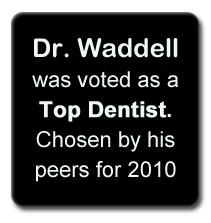










 by
by 
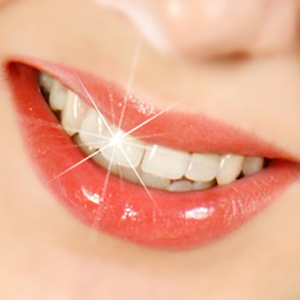 Cosmetic Dentistry
Cosmetic Dentistry
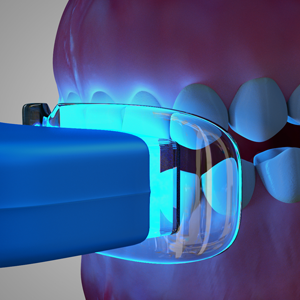 Teeth Whitening
Teeth Whitening
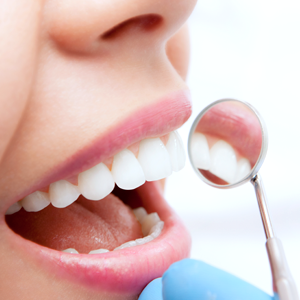 Emergency Dentistry
Emergency Dentistry
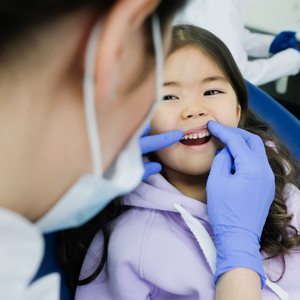 Pediatric Dentistry
Pediatric Dentistry
 Invisalign
Invisalign
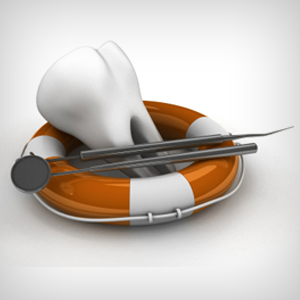 Services
Services


